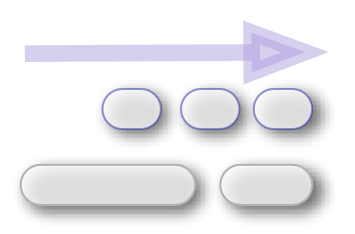Difference between revisions of "What is Scenario Thinking?"
| Line 8: | Line 8: | ||
</table> | </table> | ||
==Why Scenario Thinking== | ==Why Scenario Thinking== | ||
Nowadays, decision making has become far more complex than ever before, taking place in a fast changing, highly uncertain information-driven environment where values, behaviours, and social structures are no longer as stable and predictable as they were. The complexity of the environment undermines our ability to understand how the future will look like. Traditional planning and forecasting practices on their own are not enough to serve our needs in getting the insights and answers to the future. <br> | |||
Accountable decision making requires a high element of certainty - an adequate level of knowledge and confidence in our assumptions about that knowledge. Thus a tool is needed for planning under uncertainty is needed. | |||
<br> | |||
<br> | |||
==What is Scenario Thinking== | ==What is Scenario Thinking== | ||
Revision as of 12:24, 14 February 2006
Why Scenario Thinking
Nowadays, decision making has become far more complex than ever before, taking place in a fast changing, highly uncertain information-driven environment where values, behaviours, and social structures are no longer as stable and predictable as they were. The complexity of the environment undermines our ability to understand how the future will look like. Traditional planning and forecasting practices on their own are not enough to serve our needs in getting the insights and answers to the future.
Accountable decision making requires a high element of certainty - an adequate level of knowledge and confidence in our assumptions about that knowledge. Thus a tool is needed for planning under uncertainty is needed.
What is Scenario Thinking
Scenario Thinking is a structured process of thinking about and anticipating the unknow future, without pretense of being able to predict the future or being able to influence the environment in a major way. Instead, it navigates through the uncertainties and large-scale driving forces that are impacting on the future. The objective is to examine possible future developments that could impact on individuals, organization or societies, in order to find directions for decesions that would be most beneficial no matter how the future unfolds. The philosophy is to proactively think and plan for future developments in stead of being a passive victim of change.
Scenario thinking always includes a number of possible future scenarios, thus preparing for many possible future events. Succesfuly used by many organizations and governments, Scenario Thinking has proven it's worth in the past thirty years.
This little introduction doesn't start to describe what Scenario Thinking really is. On this page there is room for many more, possibly contradictory, descriptions of what Scenario Thinking really is.
Benefits of Scenario Thinking
The benefits and applicability of this process and methodology are broad and deep. Scenario Thinking establishes a thinking process that enables change anticipation and preparedness, and evaluation and risk assessment across possible environments. Every decision making context – product development, marketing, finance, investment, strategic planning, human resources, policy – faces the challenge of responding to external factors, be they economic, social, political, technological or environmental. Scenario Thinking informs decisions by evaluating them in the context of possible futures.
Scenario Thinking Processes
The process of scenario thinking is widely recognised as a tool for informing planning under uncertainty. There are many different methodologies that go by this name and they vary considerably.
A Scenario Cycle is a presentation of a full scenario cycle, from articulation of the focal issue to the way scenarios are used to change an organisation and to transform strategic uncertainties from liabilities to assets.
A sequence of steps however is not thinking process. This cycle is simply a sketch of scenario process, rather than a thinking template. The world is complex and complex situations require complex representation.
